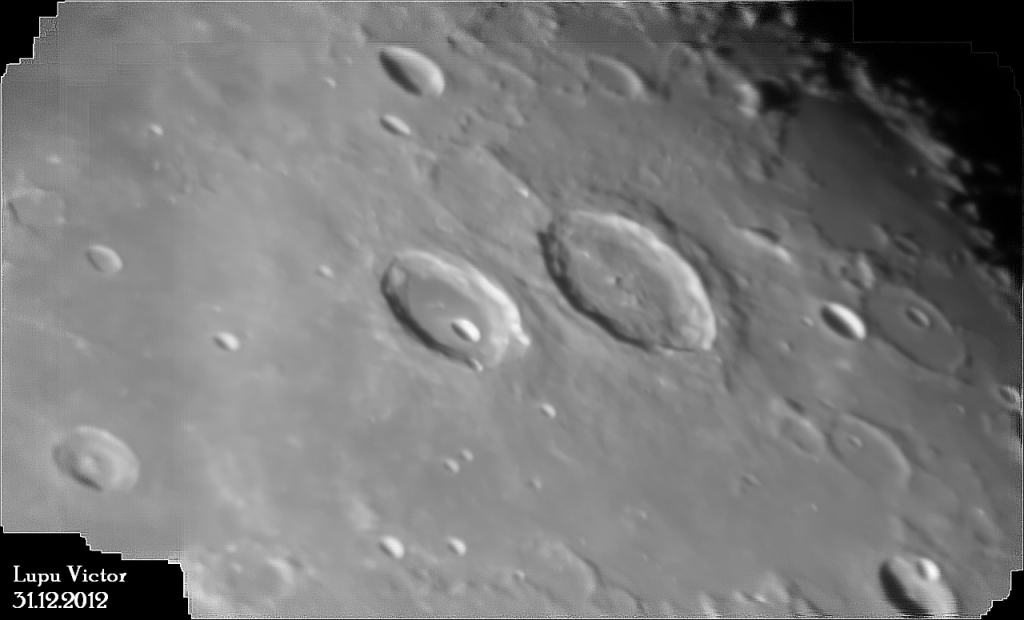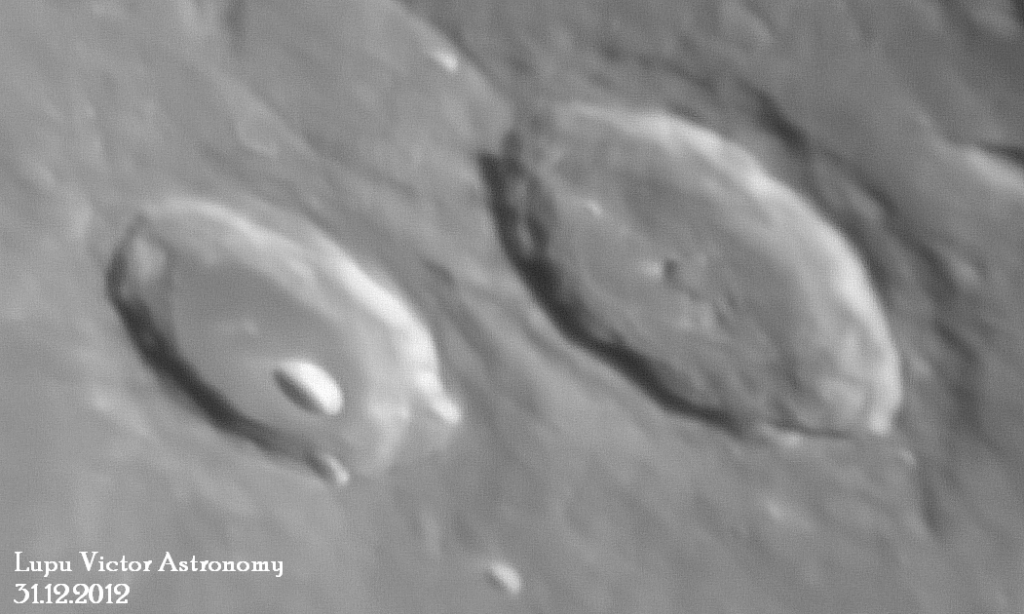 |
| Hercules and Atlas 2024 frames at 73%, Gaussian in Registax |
 |
| Hercules and Atlas 33 frames at 93%, Gaussian in Registax, |
 |
| Hercules and Atlas 2024 frames at 73%, Gaussian in Registax, cropped |
 |
| Hercules and Atlas 2024 frames at 73%, Gaussian in Registax |
Craters Hercules and Atlas (69 and 87 km), captures the viewer's attention in these images. Notice the central peaks of Atlas crater, and the dark stain on the floor on its south and north. Atlas A crater (22 km) is located east, and in turn, this has a flooded crater on the east, whose edges are barely visible, named Chevalier (52 km). All these craters mentioned above are arranged in a nearly orizontal line on the Moon, from left to right.
Notice the little crater on the floor of Hercules named Hercules G (14 km). Also notice the attached crater northwest of Atlas, considerably big, which is almost visible because it was flooded by lava so is noticeable only its form, called Atlas E.
Hercules crater, is named after a character from classical mythology, which is the Latin name of Heracles (Greek), son of Zeus (or Jupiter).
In the bottom left in images, is the crater Burg (40 km), which is located in the center of a small plateau called Lacus Mortis.
Images are processed in Registax of a video that have taken more shots, merged to form a single image.
Age of the Moon: 17 days
Phase: 93% (0% = New, 100% = full)
Distance: 394.960 km
Optics: Celestron C8-Newtonian telescope, 20mm Plossl, 2x Barlow
Mount: CG5 (EQ5) motorized
Camera: Sony CX130
Filter: no
Date: 31/12/2012
Location: Baia Mare, Romania
Processing: Registax, FastStone Image Viewer




 Thursday, June 20, 2013
Thursday, June 20, 2013
 Unknown
Unknown


 Posted in:
Posted in: 


0 comments:
Post a Comment